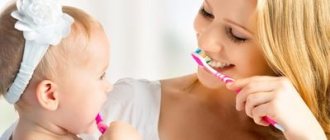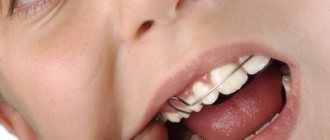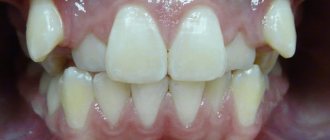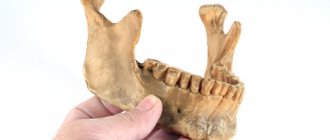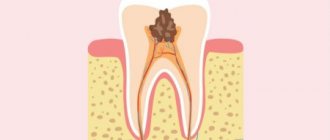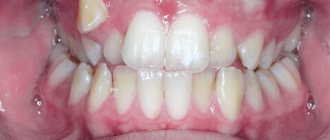The enamel of baby teeth is thin and delicate. Therefore, the first teeth are susceptible to caries. Often, tooth decay occurs before the child begins to eat sweets: literally some time after teething. If in the first years it was possible to avoid caries, then at the age of 3–5 years the risk increases: children at this age already try chocolate and other desserts, and do not always brush their teeth thoroughly. However, it is not recommended to remove baby teeth ahead of time. How and why to treat them and how to decide which treatment is appropriate?
Baby teeth last for several years, but it is important to preserve them
Modern methods of treating primary teeth in children aged 2 to 4 years
Modern parents believe that treating a child’s teeth is a waste of time, because over time, milk teeth will be replaced by permanent, healthy teeth without caries.
But every pediatric dentist will call this opinion erroneous, since caries negatively affects not only the oral cavity, but also the condition of other organs and systems of the small patient. The reasons for the development of childhood caries are different. How do young children have their teeth treated today in the Russian Federation? This is done using a gentle method and using only the latest developments in dentistry. Therefore, during this procedure the baby does not experience any discomfort, much less fear.
From 2 to 4 years of age, pediatric dentistry uses the method of silvering baby teeth. A specially developed medicine is applied to the already damaged enamel. The drugs of choice are Saforide and Argenate - they contain 30% silver. After application, the dentin canals close and the spread of bacteria that cause caries stops. This procedure does not bother the baby at all, and he calmly sits for the required time in the chair.
The fluoridation procedure helps eliminate caries in children as reliably as the first method. There are two ways to go here. The first is the application of a fluoride-containing preparation with a brush to the tooth enamel. The second is treatment with a tampon, which is soaked in a special liquid. It contains copper and calcium hydroxide.
Dental treatment today is neither painful nor scary, and this is the main difference between dental offices and those that existed 20 or even 30 years ago. We use modern, effective anesthetics with different flavors, silent drills, and multi-colored fillings, the color of which the child can choose himself.
Causes of caries in children
The main cause of the disease is poor hygiene. Sometimes, if a patient experiences severe stress or a sudden decrease in immunity, this affects the condition of the teeth. Parents should understand that inflammatory processes can occur even in very young children. That’s why any pediatric dentist so often talks about the importance of proper cleaning and oral care.
Accordingly, the main process for those who want to avoid caries will be home hygiene. Next, we will talk about dangers that are difficult to track right away. For example, what’s wrong when a child falls asleep with a bottle of milk, but you don’t want to wake him up.
What other causes of caries in a child can be? For example, poor nutrition leads to inflammation of the enamel. If the body does not receive enough calcium, protein and other important elements, then the teeth will be weak. As for the popular thesis that caries occurs only from sweets, we will also talk about this later. Don't rush to conclusions!
If a child has constant caries, then there are one or more reasons that you simply do not notice. You shouldn’t think that caries is an exclusively age-related problem and that by the end of school everything will be fine with your teeth. This is a big misconception. It is necessary to treat every case of caries and always find the cause of the problem.
How caries is treated today for young children under 7 years old
According to statistics, caries is one of the most common diseases in children. It proceeds differently for each preschooler, which requires a different approach to each child. Often, only the restorative procedures described above are sufficient. But sometimes a full-fledged complex therapy with fillings and further preventive monitoring of the oral cavity is required.
Treatment of caries in children is carried out with filling material, which is based on glass ionomer cement. One of the representatives of this group is the drug Vitrebond. With its help, treatment is carried out in a short time, and small lesions under this material are restored quickly and painlessly.
How are children's teeth treated in modern dentistry? The most popular method is chemical-mechanical. A medicinal gel is applied to the infected tooth, which allows you to remove damaged dentin painlessly and without the use of drills. In this case, only dead tissue is removed, so the child does not experience any discomfort or pain. Then the tooth, cleaned of carious surfaces, is filled.
The air-kinetic method allows you to clean a carious cavity using a stream of water, air and abrasive particles that enter the mouth under pressure. This jet, directed at the affected area, “washes away” caries. However, this method is effective only at the initial stage of the disease.
But here another question arises - how is pulpitis of baby teeth treated in children? It will not be possible to do this in one visit to the dentist, since the therapy is carried out in several stages. Treatment can be conservative or surgical, but the second method is not used for baby teeth. Therefore, if conservative treatment for pulpitis does not bring results, it is better to remove the affected tooth.
How to treat the teeth of a child 3 years old or older so that he is not afraid and does not cry? Laser technology helps here. Such devices are not installed in all clinics, but in large cities they are available.
And finally, the use of ozone allows you to quickly and painlessly clean the carious cavity and destroy all microbes that cause the destruction of enamel.
At what age can teeth be treated?
At what age do children have their teeth treated? This is a question that interests all parents of preschool children.
While the child is breastfed, such a need does not arise, especially since the first teeth begin to appear no earlier than 6 months from birth. But as soon as the child begins to eat at the common table and tries food familiar to the family, parents need to be attentive to the condition of the teeth. Problems with them begin when the body begins to lack minerals. The most dangerous period is from 5 to 14 years.
Therefore, as soon as the baby turns 1 year old, he needs to visit the dentist’s office every 6 months for preventive purposes. Caries or pulpitis of baby teeth detected at an early stage can be treated much easier and faster than advanced cases.
Treatment of caries using the icon method: indications and contraindications for use
Among the main indications for the use of this technique are the following:
- Removing the bracket system. It happens that wearing orthodontic appliances can lead to the formation of chalky spots in the cervical area. Treatment using the icon system can stop the further development of the disease, and also preserve the integrity of the tooth.
- The initial stage of caries (spot). This period is most favorable for curing dental units without damaging the surface, preserving the color and healthy condition of the enamel.
- Damage to teeth in hard-to-reach or hidden areas. In cases where access to the damaged area is difficult for a drill, for example in the spaces between teeth, using applicators with a special composition is the best way to achieve the desired result.
- The patient is young. Treatment of caries using the icon infiltration method will allow you to painlessly stop the destruction of baby teeth and not instill fear in the dentist’s office. And this is extremely important in childhood. In addition, the technique is absolutely safe and will not harm the baby.
Despite such a large number of advantages, the system is not without some disadvantages. Among the contraindications to treating caries without a drill with the icon system are the following factors:
- Advanced stage of caries.
- Children under 3 years old.
Where can you get your child’s teeth treated without fear?
It is good if the child is observed by one dentist throughout the entire period from early childhood to 18 years.
Firstly, the baby will always see a familiar doctor in front of him and will not be afraid, cry or worry. And secondly, a specialist who monitors the child’s dental health from an early age knows all its features and will notice the problem at the very beginning of its development. It is important not only how teeth are treated for children 2 years of age and older, but also where it is done. All establishments in the city are divided into three large groups:
- State clinics. This option is best left for last resort. Why? There are long queues, many capricious children, nervous parents and doctors who are given a limited time for an appointment and not a minute more. At the same time, dental equipment, as a rule, remains from the last century, and no one has heard of good medicines and fillings.
- Special children's rooms in high-profile private hospitals. If you are looking for a good combination of price and quality, then this option is suitable. There is all the necessary equipment, modern medications designed specifically for baby teeth, and a specialist doctor whose competence includes only the treatment of children’s first teeth will work with a boy or girl.
- Private specialized children's dental clinics. They are intended exclusively for small patients. Here everything is done for their coziness and comfort, there are no long queues, all patients come only at the appointed time, and you can make an appointment for a convenient day for an appointment. All equipment, instruments and medications are intended exclusively for children's teeth. Well, the quality of service always remains at the highest level. The only negative is the high prices, and even a simple consultation will be paid.
Which treatment methods to choose and where exactly the baby should be treated is, of course, decided by the parents. You should not go to extremes and should choose according to your financial capabilities. After all, even in a free city clinic you can get access to competent and experienced specialists. The only thing that remains is to read the reviews and ask your friends who and how they treat the teeth of children aged 4 years. If possible, immediately contact a paid pediatric dentistry.
Treatment of permanent teeth in children
Permanent teeth, like baby teeth, also require careful care and sometimes treatment. At the initial stage, caries therapy can be carried out using methods such as:
- Silvering, which has an antibacterial effect and helps stop the process of further destruction of the enamel.
- Remineralization is carried out for children who attend primary school.
- Ozone therapy is a painless method that does not injure the oral cavity.
For superficial caries, a popular method is fluoridation or filling. Medium and deep caries require a more serious approach to treatment - here safe fillings containing silicophosphate cements are installed. To clean the dental canals, depophoresis with a calcium solution is used. Finally, laser therapy is well suited for the treatment of permanent teeth. It helps to forget about the drill and scalpel, but this method is used in children over 7 years old.
Stages of treatment
Like any other dental service, treatment using the icon system (Moscow) has its own characteristics.
Duration
The duration of the procedure is only about 25 minutes. The patient will only need to visit the dentist once for treatment. In addition, absolute painlessness does not require additional measures before the procedure: sanitation of the oral cavity, administration of anesthesia and others.
Procedure
Treatment of caries without drilling icon begins with cleaning the tooth surface from bacterial plaque. Using a special latex plate (rubber dam), the dentist isolates the dental units from the oral mucosa. This is done to ensure the surgical field is dry. After this, special wedges are used to move the teeth slightly away from each other. The sensations are not entirely pleasant, however, in comparison with a drill, they are quite tolerable.
The next step is to etch the affected area with a special solution. This is done in order to open the pores in the carious area. The composition is formed by amino acids and sodium hypochloride (HCl). The duration is only two minutes, after which the gel is washed off with water, and the dental units are dried with air currents.
After completing the preparatory stage, the dentist proceeds to the actual treatment of the tooth. The doctor alternately applies two polymers to the affected area. The first one is applied for 3 minutes and then exposed to exposure. 2nd – for 1 minute, during which the carious cavity is sealed. The effect will be noticeable immediately. The cured tooth acquires a uniform white shade and a healthy appearance.
Anesthesia for dental treatment
Treating a child’s tooth while sleeping is much more convenient and safer. Therefore, often in children, dental treatment under anesthesia is preferable to without it. At the same time, dentists are confident that the use of gas as anesthesia does not cause any harm to the body, even of an infant.
Treating teeth under anesthesia for a child aged 2 to 4 years is one of the most convenient and popular methods. The inhalation method is based on the fact that the baby simply inhales a special mixture, and then calmly falls asleep. Doctors provide treatment, and then the child wakes up with no memory or pain or fear of doctors.
To use inhalation anesthesia, the clinic must have a license, the necessary equipment, and an experienced anesthesiologist who knows how to work with children. It is important to remember that under general anesthesia, teeth are treated only for a healthy child - he should not have a cold, and at least two weeks must have passed since the acute respiratory infection, acute respiratory viral infection or other illness. Also, do not use this method immediately after vaccination.
Local anesthesia is another popular method of pain relief. But if it is customary to treat teeth in a dream in young children, then this method can be used in schoolchildren. Its essence is that an anesthetic drug is injected into the gum using a syringe and a needle, which will not allow the child to feel pain during treatment.
All modern technologies that exist in Russia only work to quickly cure teeth at the moment when they manage to persuade the child to open his mouth. But can the quality of such treatment be at its best? It will not be possible to completely remove infected and diseased tissue. Not to mention fillings, whose task is to harden faster in order to somehow cover carious holes. This leads to the fact that soon the parents bring the child to the doctor again, but now with even greater problems.
An equally popular problem is the baby’s fear. Therefore, inhalation anesthesia is an easy way to cure a child’s carious teeth in one visit to the doctor, and then not remember about this procedure until the next preventive examination.
Technology and materials
Dental treatment using the icon system has a number of features. These include the following:
- The procedure will be effective only when treating caries at the spot stage, that is, when there is no superficial damage to the enamel.
- Anesthesia is not required, since a drill or other mechanical methods of treating the tooth are not used.
- Without a drill.
- Strengthening the structure of teeth and protecting it from negative environmental factors.
- Infiltration – does not lead to the appearance of microcracks. This ensures minimal risks for re-injury.
- Preservation of the natural shade and naturalness of the dental unit in comparison with the rest of the dentition.
Using the icon method allows you to treat caries without preliminary preparation. A number of drugs and materials are used to carry out the procedure:
- A special gel containing hydrochloric acid.
- Ethanol.
- Composite materials that harden under light rays.
Several options for infiltration kits are available. The first is for treating areas in close proximity to the mucous membrane. The second, for use in areas located in close proximity to adjacent healthy teeth.
Treatment of caries without preparation using the icon system allows you to get beautiful, smooth, transparent and healthy enamel. The action of the compositions begins immediately after application. Without affecting the tooth tissue, the solution penetrates directly into the damaged cavity. A qualified specialist is the key to the success and effectiveness of the procedure. The cost of icon caries treatment will depend on the patient’s clinical picture. However, the cost will be in the range of 4000-6000 rubles.
Psychological aspect
To prevent children from being afraid of dentists, clinics use distracting maneuvers. While waiting and even during treatment, children can be shown their favorite cartoons. You can read a fairy tale, play games. Some clinics even have special rooms where boys and girls can relax and forget about the fear of an unfamiliar doctor.
The staff in children's clinics dress in bright clothes, and you can see smile masks on their faces. Each office has a thoughtful interior that resembles not a hospital, but a gaming center. The best clinics employ a psychologist who helps the child overcome his fear of dental treatment. The rest of the staff also takes courses in communicating with children.
A child’s teeth can be treated without general anesthesia, but it is better to use this safe method today. The main thing is to make it clear to the child from a very early age that the dentist is not a terrible doctor, but a friend of teeth from childhood.
Author: Zhukov M.A.



